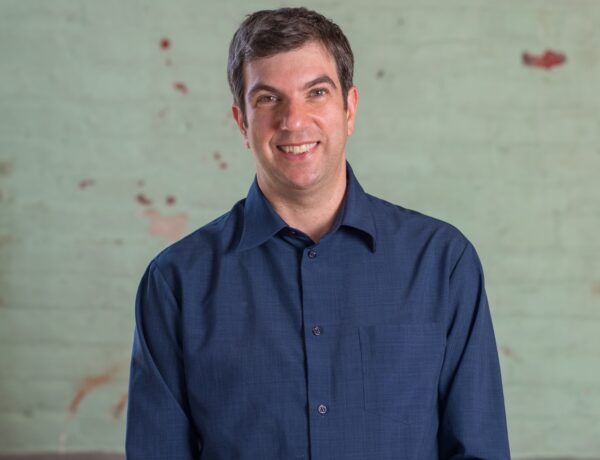Sarah Stankorb is a journalist with a wide range of experience in various publications. Her articles and essays have appeared in The Washington Post Magazine, The New York Times, Vogue, Marie Claire, Glamour, O Magazine, Longreads, and many other publications.
She has received awards for her work, including a Society of Professional Journalists’ Excellence in Journalism award for “Rape Culture Lives Here.” Her beat spans politics, the environment, health, technology, religion and cultural commentary.
Sarah grew up in the Rust Belt and has worked for various non-profit organizations as a communications consultant. She is a member of the Society of Professional Journalists and the American Society of Journalists and Authors.
Each week, we publish a new daily writing routine from a famous author. Subscribe to our newsletter so you don’t miss out!
Hi Sarah, we’re delighted to have you as a guest on Famous Writing Routines! To kick things off, your articles and essays have appeared in a wide range of publications, including The New York Times and The Atlantic. How do you decide which publications to pitch your work to?
Honestly, it’s usually a matter of finding the right space for the story. It depends if it’s an essay, what topic, if an article, what beat? Do I know an editor at a specific publication–or have I seen an editor posting online who happens to be looking for a story like mine? Although I’ve been doing this for over a decade, to my mind, it’s still a buyers’ market, so I need to be nimble and have a read for what editors need and who might bite.
How do you come up with story ideas and what is your research process like?
That depends on what sort of writing we’re talking about. For essays, these usually come from personal experience. I’ll have a stroke of insight and start mulling a line over and over until I realize I’ve been rehearsing at least the first paragraph in my head. It cycles until I have to write to get it out–and figure out the rest of what I need to learn in that moment by outlining and writing the rest of the piece.
For reported work, I’ll often have one source mention a wild detail as an aside during an interview that I flag for later. I file the story and then let myself circle back and do a research dive. Only occasionally have I been in the midst of one story and that aside became so significant that I had to put all else on hold and chase the new story. That’s what happened with my piece for VICE on Moscow, Idaho’s Christ Church.
My research process is intense. I’m just winding down from writing my first nonfiction book (due out in August 2023). I layer in interviews with various people, sometimes getting to know them over the course of months or even years. For this book, I relied upon strings of phone interviews, texts, emails, and in-person visits that sometimes span back to 2016.
My office had stacks of waist-high books that I marked with stickies at any point that I thought I’d want to refer back to later, and then digitized those into my Google Drive for later reference and searching. (I paid my kid to help me do this as many were library books!) I have a Zotero library filled with court documents and other public records.
I’ve been retaining recordings of various calls and meetings just for fact-checking purposes. I also used a lot of old DVDs, CDs, and even cassette tapes to create a sense of the media my sources grew up with. For any deeply reported story, I annotate as I write, with links to my drive or references to my offline sources so they can all be validated in fact-check. Frankly, it looks bonkers, but I’m told it’s a dream for the fact-checker.
While I haven’t yet published any of it–I’m still working up my nerve–I have written a bit of fiction too. Then, it’s more like characters start to emerge. Once I find myself thinking about them and a driving problem, and imagining how they would react to situations in their voice, I begin storyboarding and develop a very detailed outline.
Only then do I write. It doesn’t matter to me whether I deviate from the outline, but that initial way through is like a first draft. Novelists are my heroes. I have a sense that fiction requires the most reworking and layering to get the characters right, at least for me.
Discover the daily writing habits of authors like Stephen King, Neil Gaiman, and Gillian Flynn with Famous Writing Routines Vol. 1 and learn how to take your writing to the next level. Grab your copy today!
You were awarded a Society of Professional Journalists’ Excellence in Journalism, Best Community Issues Story award for “Rape Culture Lives Here.” Can you tell us about the process of reporting on that story?
That was a while back, but what I can say is that it was a struggle, as it can be at times, to get an adequate and timely public records response from one of the universities involved in the article. I learned a lot from that process as a reporter, on my own need for specificity and persistence.
When I did receive the records, I was buried. By then, I’d already spoken to multiple sources who had been assaulted or raped on or off campus, so I understood the human toll of what I was reading in the redacted records of those who did come forward and who had managed to navigate the university Title IX offices.
It’s also when I started to understand in a real way the toll to survivors of trauma in sharing their story–even when they hoped doing so would do some good. I learned that I have to go at a survivor’s pace. I am here to gather pieces as they come and then it’s up to me to fact-check as I can, document and investigate in my own time.
I also learned the importance of drawing up timelines for my own use because traumatic stories do not always come out linearly from sources, and I don’t want to get a story wrong because someone took an aside to explain some detail that was emotionally meaningful that I misunderstood as chronological. The narrative arc isn’t their job; it’s mine.
How do you typically structure your writing routine? Can you share a typical day in the life of your writing process?
Oh, I am such a creature of habit. I tend to get to my office once my kids are off to school. I make a cup of tea (which I usually then neglect to drink). I put a couple of drops of something nice in the air diffuser and turn on music. I like to start with the most creative writing I need to do that day.
I like mood or TV series soundtracks to match the mood of my subject or metal to just zone out. I’ll write for a couple of hours from the couch in my office until I reach a natural breaking point or finish up, drink my cold tea, stretch, eat a snack or lunch, depending on the time. If it’s around noon, I’ll bounce through emails, maybe listen to the news while I do it, then either take a walk or go grab a drink at the coffee shop.
I try to keep calls to the early afternoon, so this might mean interviews or any other work-related calls. As soon as those are done, I start to feel anxious about school letting out and family demands looming beyond 5 pm, so I kick back into writing gear–here, more pragmatic tasks. I’ve started a Substack, so I might work on that, or work on story edits.
Can you talk about any specific tools or techniques you use to stay motivated and productive while writing?
I’m a BIG fan of outlines. I’m flexible about deploying them. If another thread winds up feeling more significant, I’m willing to adjust as I’m writing, but it’s important to me to have a sketch of a story planned before I start writing. Even with an essay that I’ve started writing in my mind, I’ll spill out that first paragraph and then write a working outline. What comes next might deviate, but the act of outlining helps.
With a reported story, I don’t outline until I have jammed my brain so full of information that I feel like I might explode if I don’t start organizing it. That’s the beauty of an outline. Often, I’ll first make a visual outline, kind of a loose drawing of the emotional flow or an image for the metaphorical “shape” of a story. This gives me a sense for what I think are the major beats in the story, and that tells me my structure. I can tuck in details from there, and turn it all into a Roman numeral outline.
For deeply reported articles, I’ll print my outline and color code it. Sometimes I’ll print part of my notes or transcripts and color code to match my outline, so it feels like it will be plug and play. For my book, I made a series of boards, and plotted out each month on index cards who I would need to interview to have reporting done in time to write chapters in coming months and what records needed to be requested (with time to hear back).
In that way, my outline turned into a reporting plan. It only worked because I was writing a book about subjects I’d been covering for years, so I already knew a lot of the material and knew my gaps, but it was the core to my process this time.
What does your writing workspace look like?
I rent a room with a beautiful old (non-working) fireplace. It has everything I need: a couch for when I need to write lying down or take a speed nap; a desk for editing or any writing that involves pulling from more than one document; another table for sorting through books or other hard copies of secondary sources; windows; and a reading chair. There’s also enough room in the middle that sometimes if I’m really ambitious and need to, I’ll do yoga or a few jumping jacks to clear my mind.

Affiliate disclaimer: Some links on this website are affiliate links. We may earn a small commission if you make a purchase through these links, but only promote products we truly believe in. We disclose affiliate links and give honest reviews.



No Comments